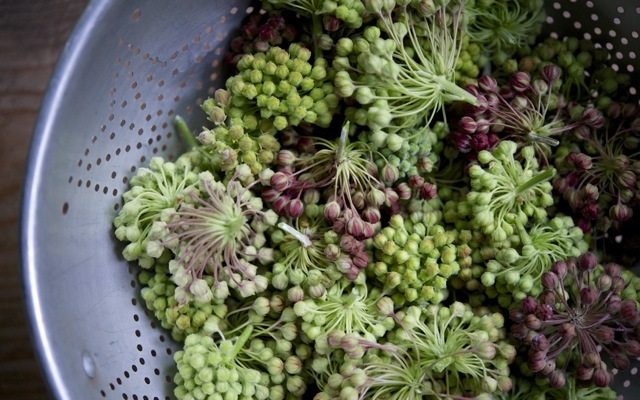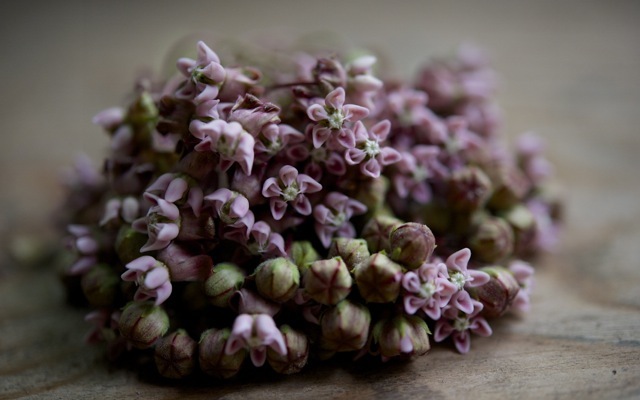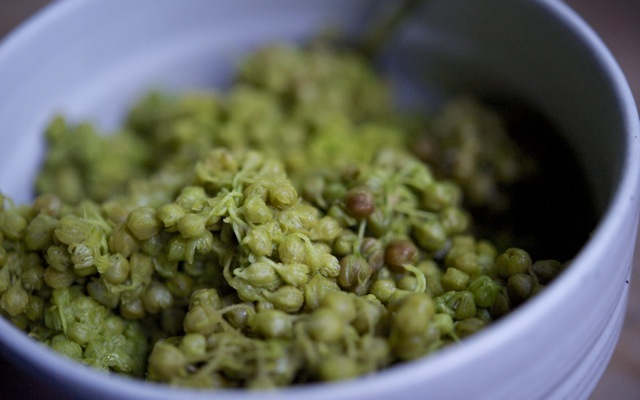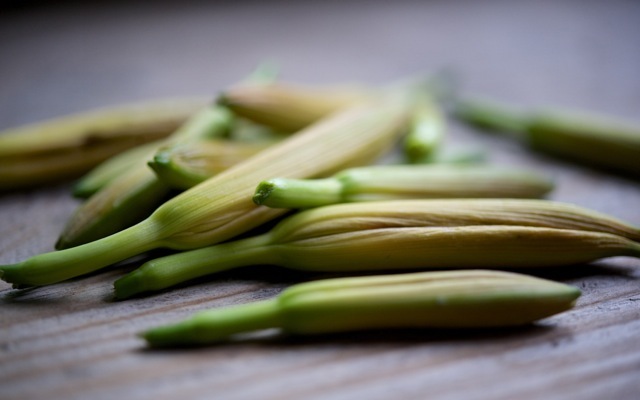7.1.13 Go Wild

Here's what you do:
Find a lovely hillside or meadow where the air is clean and the water is pure and look for the tall stalks of the milkweed plant sticking up amidst the long grasses and wildflowers. Go now, before the beautiful, beaded pale green clusters bloom into wonderfully fragrant mauve flowers. Take a cotton tote or a plastic bag and pinch off the buds, being careful not to disturb any Monarch butterfly cocoons. Make sure not to denude any stalks and to leave plenty of buds behind.
Milkweed tends to grow in great patches, so it shouldn't be hard to forage sustainably. Your fingers will become sticky from the white latex that oozes from this plant wherever you break it. Thistles and nettles may grow nearby. Dragonflies will dart around you, glistening in the sunlight. Take what you need for dinner and move along.

The choicest buds are those that are still tightly closed and slightly fuzzy. But don't miss the opportunity to inhale the sweet scent of the ones that have already opened. Each cluster is comprised of dozens of tiny, perfect flowers—an important source of nectar for bees and other insects.
The variety prevalent near me is common milkweed, Asclepias syriaca. The young shoots, leaves, flower buds and tender pods are all edible raw. They gained a reputation for bitterness from Euell Gibbons, who, in his seminal book, Stalking the Wild Asparagus, advocates blanching in several changes of water to dispel this taste. However, knowledgeable sources speculate that he was accidentally eating dogbane, which is quite bitter, and that milkweed, in fact, is rather mild. I find that blanching it for less than 5 minutes is plenty of cooking. Tossed with lots of butter and salt (or butter and miso!), milkweed buds are absolutely delicious and the texture is unusual and wonderful in equal measure.

The taste is hard to define but is something like asparagus with a richness cut by a slight tannic quality. The little baubles soak up the butter. I imagine they would also be quite tasty with olive oil, hot chile and parmesan.
Be sure to study any plants well and note their unique features so you will feel confident in your identification. As with all wild foods, eat only a small bit at first to make sure they agree with you.

On the same outing, I also gathered a large handful of common daylily buds (hemerocallis fulva), another native plant that is plentiful now. These can be eaten at all stages, but the buds are especially delicious. Sauteed briefly in butter, they taste a bit like asparagus with a hint of squash blossom.
So venture forth and take sustenance from the land. Eat shoots and leaves. Go wild.
Milkweed Buds with Butter
serves 2
- — 4-6 cups young milkweed buds
- — 3 tablespoons unsalted butter, softened
- — 1 teaspoon sea salt
Place the milkweed buds in a colander and rinse thoroughly, then shake to dry. Transfer buds to a medium saucepan and place on the stove. Leave colander in the sink.
Bring a large kettle full of water to the boil, then pour over milkweed just to cover. Turn on a high flame under the milkweed and cook for one minute. Drain and repeat the process twice more.
Once you have gone through three changes of water, cover milkweed once more with boiling water and cook for about 5 minutes. Transfer to a colander and allow to drain for a few minutes.
Place cooked milkweed in a serving bowl, add butter and salt, and stir gently to mix well.
Serve right away.
 Download Recipe
Download Recipe






6 Comments